HYBRID EVENT: You can participate in person at Barcelona, Spain from your home or work.
Indoor Fish Farming
Indoor Fish Farming
Indoor fish farming allows for efficient fish production within controlled environments, making it a sustainable solution for urban and land-restricted areas. With the use of recirculating aquaculture systems (RAS), indoor fish farms can minimize water usage and reduce environmental impact by maintaining optimal conditions for fish growth. This method is especially beneficial for producing species like tilapia, catfish, and salmon in large quantities, and it enables year-round production, unaffected by seasonal or climatic factors. Additionally, indoor fish farming can address concerns around food security, providing fresh and locally produced fish to meet the demands of a growing population.
Committee Members

Perry Raso
Matunuck Oyster Farm, United States
J L Giovanna Hesley
Education Emerita, CropKing Inc., United States
Virendra Kumar Goswami
Indian Institute of Technology, India WAC 2026 Speakers

Amit Das
Memorial University of Newfoundland, Canada
Mandeep Kaur
Panjab University, India
Pavarot Noranarttragoon
Department of Fisheries, Thailand



Title : Application of Artificial Intelligence and NISAR satellite to study the air sea CO2 exchange and aquatic toxicology to develop ‘Aquatic Pollution Remediation Technologies’(PART)
Virendra Kumar Goswami, Indian Institute of Technology, India
Title : Conditionally pathogenic microparasites (Microsporidia and Myxosporea) of mullet fish potential objects of mariculture in the Black and Azov Seas
Violetta M Yurakhno, A. O. Kovalevsky Institute of Biology of the Southern Seas of Russian Academy of Sciences, Russian Federation
Title : New approaches to assessing and managing the multispecies fishery in the Gulf of Thailand
Pavarot Noranarttragoon, Department of Fisheries, Thailand
Title : Integrating art, science and rural development: The multifaced role of aquarium keeping
T V Anna Mercy, Kerala University of Fisheries and Ocean Studies, India
Title : Seaweed aquaculture policy gap analyses in Indonesia, Kenya, and Tanzania
Megan Considine, The Nature Conservancy, Puerto Rico
Title : Utilizing art to enhance learning STEM subjects required for aquaculture
J L Giovanna Hesley, Education Emerita, CropKing Inc., United States